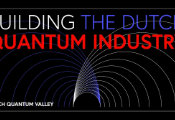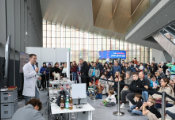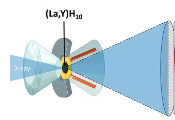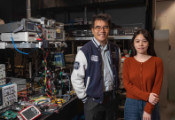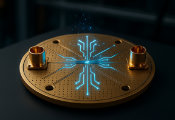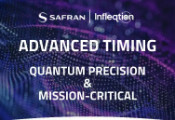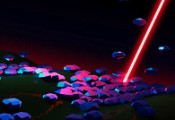Quantum Entanglement Between Electronic and Motional States in Cold-Atom Quantum Simulator
September 2, 2024 -- Researchers in the Institute for Molecular Science revealed the quantum entanglement between electronic and motional states in their “ultrafast quantum simulator,” generated by the repulsive force due to the strong interaction between Rydberg atoms. They also propose a new quantum simulation method including repulsive force between particles. This achievement is published August 30th in Physical Review Letters.
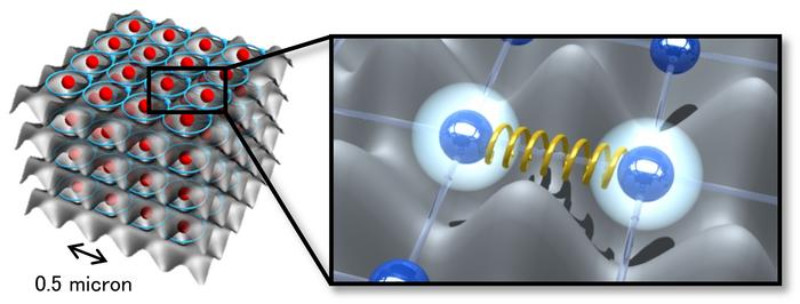
Cold atoms trapped and assembled by optical traps have attracted attentions as a platform of “quantum technology” such as quantum computing, quantum simulation, and quantum sensing. The correlation between quantum states of respective atoms, called “quantum entanglement,” plays an essential role in the quantum technology. Giant electronic orbitals, called “Rydberg states”, are used to generate quantum entanglement in the cold-atom platforms. In this paper, the authors investigated the quantum state in the ultrafast quantum simulator in detail, and they revealed that the “quantum entanglement” between electronic states and motional states are formed by the strong repulsive force between atoms in the Rydberg state, in addition to the “quantum entanglement” between electronic states of atoms.
he 300,000 Rubidium atoms were cooled down to 100 nanokelvin by laser cooling, and loaded into the optical trap forming an “optical lattice,” resulting in a spacing of 0.5 micron. Then, the “quantum superposition” of the ground state with an electron in the 5s orbital and the Rydberg state with an electron in the giant 29s orbital was generated, by irradiating an ultrashort pulse laser light lasting only 10 picoseconds.
In previous studies, the distance between Rydberg atoms is restricted to about 5 microns because a Rydberg atom prohibits the excitation of surrounding atoms to the Rydberg state, called “Rydberg blockade.” The authors evaded this effect by the ultrafast excitation with the ultrashort pulse laser light.
By observing the time-evolution of the quantum superposition, the authors found that the quantum entanglement between the electronic states and motional states is formed in few nanoseconds, in addition to the entanglement among electronic states. This can be understood by the repulsive force between atoms in the Rydberg state owing to the very strong interaction, which introduces the correlation between “either the atom is in the Rydberg state or not” and “either the atom is moving or not.” This phenomenon appears only when Rydberg atoms are close comparable with the spread of the atomic wavefunction in the optical lattice (60 nanometer), and its observation was enabled owing to the distance of 0.5 micron realized by the unique ultrafast excitation method of the authors.
The authors also proposed a new quantum simulation method including the repulsive force between particles, such as electrons in materials. The repulsive force can be introduced by exciting the atoms in the Rydberg states only for short time of nanosecond scale, using the ultrafast pulse lasers. By repeating this rapidly, the repulsive force between atoms trapped in the optical lattice is arbitrarily controlled. This method is expected to realize a new quantum simulation involving the motional states of particles having a repulsive force.
The research group of this paper is also attracting the interest by developing an “ultrafast cold-atom quantum computer,” which accelerates a two-qubit gate operation by two orders of magnitude from conventional cold-atom quantum computers. The ultrafast cold-atom quantum computer employs the Rydberg states to implement a two-qubit gate operation, and the effect of the atomic motion during the interaction is one of the main reasons to reduce the fidelity of the operation. This paper experimentally revealed the process that the quantum entanglement between electronic and motional states is generated, which is also an important progress to improve the fidelity of the two-qubit gate operation and to realize socially useful quantum computers in future.

